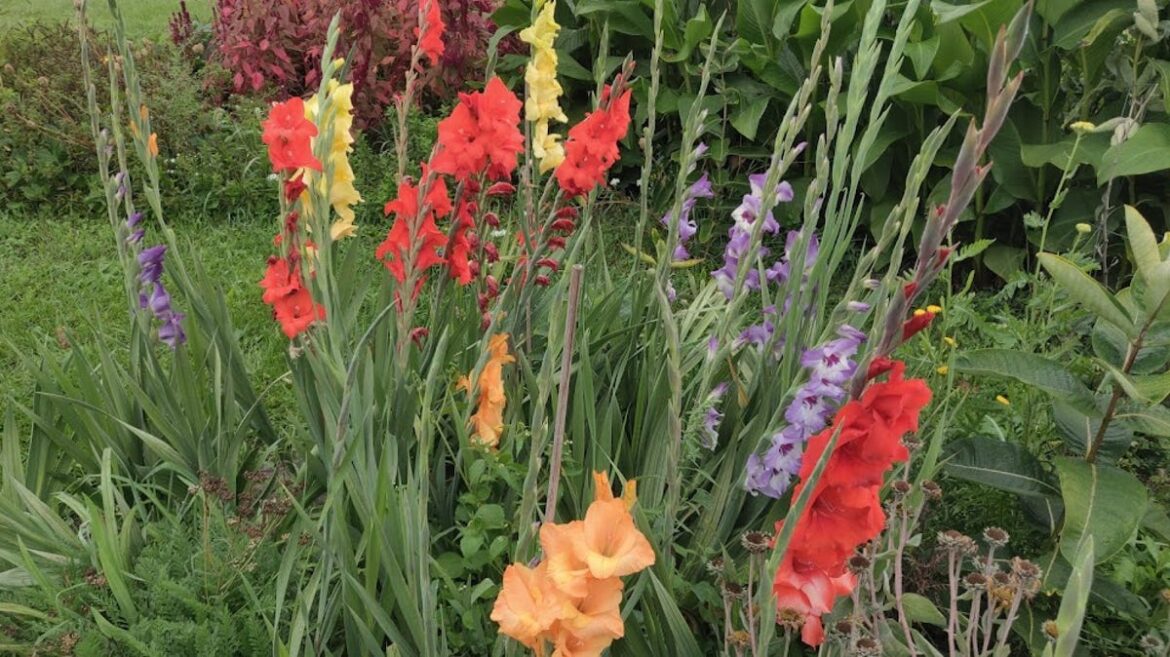This week’s work in our garden includes digging up and preparing gladiolus bulbs for winter storage. Gladiolus, or glads for short, cannot survive in the ground though the winter in our area.
Even though glads are called flowering bulbs, the bulb is actually a “corm,” not a true bulb.
We dug our glads a couple of weeks ago. Normally we would lift them much earlier, but since it has been such a mild autumn, their foliage stayed green despite a few frosty mornings. It’s best to leave the foliage on for as long as possible to allow the corms to receive as much energy as possible from the tops.
Depending on the location and exposure of your gladiolus bed, you may still be able to successfully lift and store your corms. They are very easy to dig. Just insert the tines of a garden fork into the soil a few inches from a plant. Grab a hold of the foliage with one hand and gently pull up while simultaneously tipping back the garden fork, prying the plant from the soil.
If the leaves are still green, leave them attached. Shake off loose soil. You will see a new corm that has grown from the top of the original corm. The old corm no longer has the shape of a corm. At the bottom of the old corm will be a number of small corms called cormels. Flower farms use cormels for multiplying new full-sized corms for sale.
Cormels may be saved over winter and planted into a nursery bed about an inch deep in rows like seeds during the spring. They’ll grow, gaining more size, then will be lifted the following fall. Glads grown from cormels will bloom in two to three years. It’s an economical and satisfying way to multiply your favorite gladioli.
Immediately after digging, place the corms into a single layer in trays to dry for a few days. When dry, twist off the leaves. Leaves form a wrapper, called the husk, for the new corm. Remove excess soil along with the outer loose layer of husk.
Snap off the old corm and discard, it will not bloom again. The cormels will come loose at the same time. Place the new corms back into their trays for a few more weeks for additional drying. Consider dusting your corms with an all-purpose garden dust to control thrips and fungus. Use about a quarter of a teaspoon per quart basket of corms. Place the corms and dust into a paper bag, close and gently tumble the corms and dust until coated.
Overwinter the fully dried corms in trays, baskets, paper bags or mesh produce bags at 35-45 degrees F.
Many baby boomer gardeners think of funerals whenever they see glads. That’s because the flowers were ubiquitous in funeral floral arrangements back when they were children. All of those huge funeral floral arrangements made a lasting impression. So, you can understand why gladiolus fell out of favor for a while. Now a new generation is enjoying them again.
Contact Bob Dluzen at bdluzen@detroitnews.com.


Comments are closed.